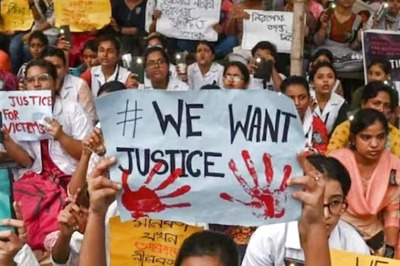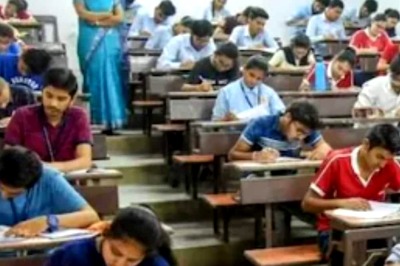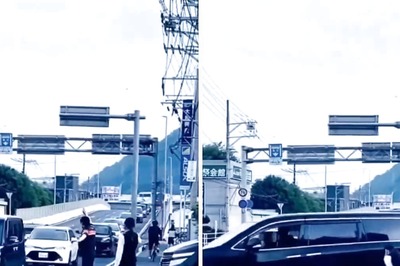
views
New Delhi: India has signed a fresh contract with Russia to buy 330 T-90S main battle tanks (MBTs) in complete sets of components for local assembly, a leading British defence journal has reported.
Citing military-diplomatic sources, the authoritative Jane's Defence Weekly declared that the order for the additional T-90S kits would in no way impinge on the agreed scope of the licence programme to construct the MBTs at the Heavy Vehicles Factory (HVF) at Avadi, near Chennai.
India bought 310 T-90S in 2001 for around $800 million -- 124 in completed form and the remaining 186 to be assembled at Avadi in response to Pakistan inducting the Ukrainian-built T 80 UD MBT into service 1997 onwards.
The Indian Army was the first export customer for the T-90S which had been in Russian army service since the mid-1990s.
Deliveries of the initial 124 T-90S tanks began in December 2002 and were completed within 12-14 months while another 180 MBTs have since been assembled at Avadi and the first part of the order is nearing completion. The T-90S tanks have been inducted into six armoured regiments in northern and central India.
The associated licence agreement provides for the assembly of up to 1,000 T-90S tanks in India with production scheduled to begin sometime in 2007. This was supposedly also to lead to a gradual increase in the share of components made locally in an effort at enhancing the T-90S indigenisation.
But, Jane's reports that the order for the 330 sets of T-90S components is driven by the fact that the Indian Army desperately needs modern MBTs due to chronic delays in the production schedule of the domestic Arjun MBT.
In addition, official sources said the upgrade of the army's Soviet and locally built T 72 MBTs, that form the backbone of the armoured regiments, was delayed by several years due to bureaucratic vacillation.
PAGE_BREAK
Delivery of T-90S kits from Russia, Jane's adds, would "speed up" the fielding of new MBTs as assembly using Indian-made components is more time consuming.
But army officers complained that the existing T-90S tanks faced "recurring" technical problems which were adversely impinging on the force's operational preparedness.
Senior armoured corps officers said the Catherine thermal imaging (TI) camera supplied by Thales of France that is the "heart" of the T-90S' fire control system (FCS) had "repeatedly malfunctioned" in the excessive summer heat of the western Rajasthan desert where the MBTs frequently exercise and will eventually be deployed.
Officers operating the tanks said temperatures in excess of 60 degrees Celsius inside the tank had rendered between 80-90 FCS "unserviceable" over the past four years. Attempts to rectify them had so far largely proven unsuccessful.
In one armoured regiment in Punjab, an alarming 30 of 40 tanks were "off-road", lamented an officer, declining to be named.
In keeping with the army's qualitative staff requirement for the T-90S MBT that stipulated a "longer range, shimmerless" sight, Peling of Belarus with its IG 46 sight entered into partnership with Thales to integrate its Catherine TI camera thereby giving the FCS a range of around three kilometres. The FCS components were "mated" by the manufacturers at the T-90S Nizhny Tagil factory in the Urals in Russia.
When problems first began to emerge in 2003 with the TI camera - priced at around Rs.20 million ($444,444) per unit, a fifth of each tanks cost of Rs.117.5 million - they were replaced as the T-90S were under warranty till March 2004.
Thereafter, with the warranty having ended, the army has grudgingly conceded that it is looking to "rectify" the FCS problem, but has not yet come up with a viable solution.
Army chief Gen J.J. Singh recently declared that the Defence Research and Development Organisation (DRDO) was considering proposals to "partially" air-condition the T-90S to overcome the overheating problem. But he did not elaborate as to how a cooling plant could be successfully engineered into the tank without undertaking major structural changes.
The T-90S licensed production that was to commence at HVF in 2006 has also been "considerably" deferred, armament industry officials said.
This was due partly to engineering problems encountered in locally assembling the MBTs, but principally because of integrating the Catherine TI camera with the 1G 46 sight.
The first locally assembled T-90S tanks began rolling out of the HVF in January 2004, but within a short period they too faced FCS problems in hot temperatures.
Ammunition for the T-90S is also posing a major problem.
Initially, the T-90S fired Russian-made AMK-338 and AMK-339 rounds, but these were soon exhausted in training and presently the tanks are without any ammunition as their 125 mm smoothbore guns have not yet been configured to fire the locally manufactured AMK-340 rounds.
Production of the MBT's 9M119 Refleks (NATO designation AT-11 Sniper) missiles by the state-owned Bharat Dynamics at Hyderabad in southern India that was scheduled to begin earlier this year is also behind schedule as several test firings have been unsuccessful. Russian technicians have been called in to assist.
Alongside, armoured corps officers said the T-90S had been "overexposed" in exercises "to suit the individual whims of senior commanders" anxious to show off the new tank and were already in need of major overhauls.
Each tank has a maximum life of 650 cycles on the onboard rev-counter with static running equalling one rev per hour while travelling 17.5 km equalled one rev. But, in less than four years, most of the T-90S tanks had completed 600 revs.
Army officers also bemoaned the shortage of T 90 simulators of which there were only five at present, in order to extend the MBT's operational longevity.
"Given the army's over emphasis on low intensity conflict the long term armour induction policy and related modernisation programmes have slipped badly," said Brig Arun Sahgal, a former armoured corps officer now with the United Services Institute. This bodes ill for its overall fighting capability, he added.
The army aims on eventually equipping its 58 armoured regiments with T-90S tanks and upgraded Ajeya T 72Mis fitted with full and partial solution FCS, explosive reactive armour, land navigation systems, frequency hopping radio sets and advanced nuclear, biological and chemical equipment to keep them in service till 2015 -20.




















Comments
0 comment